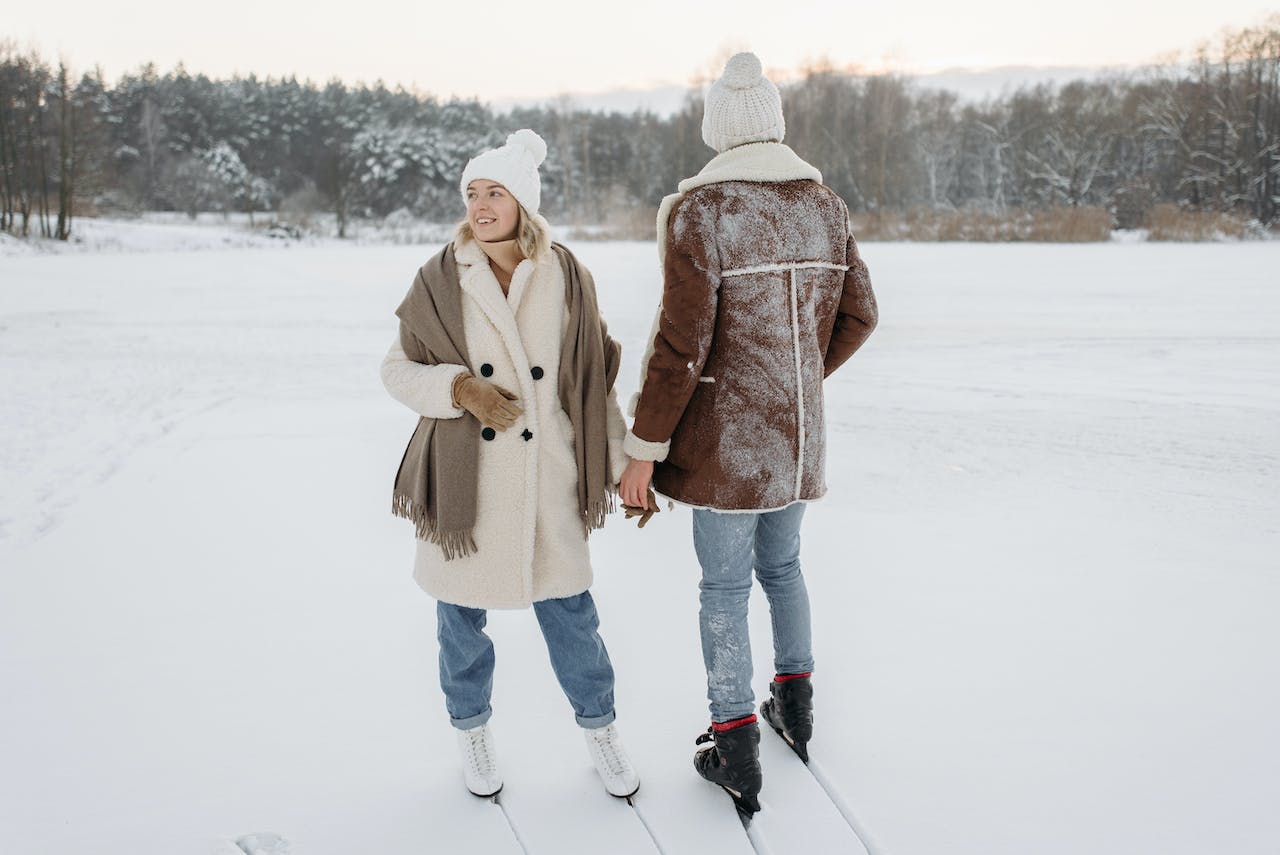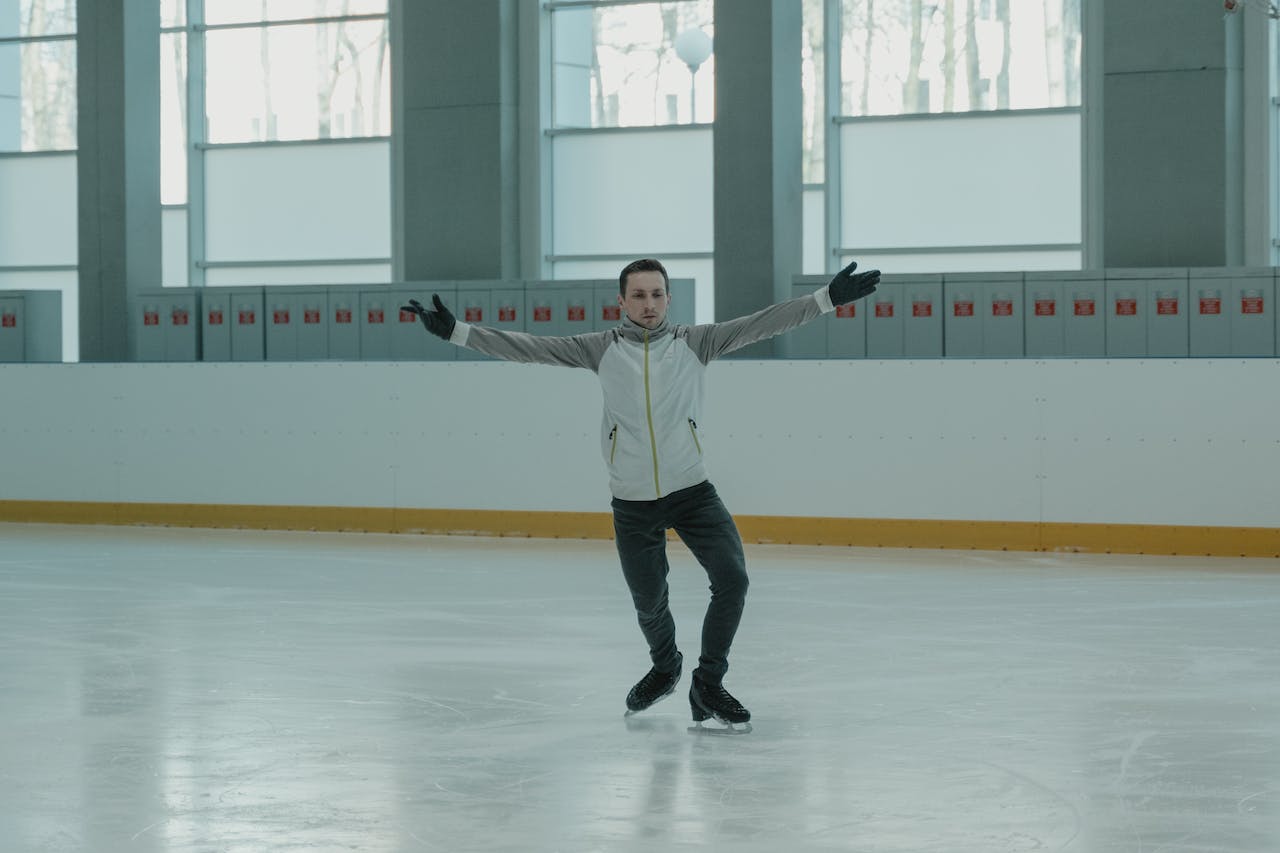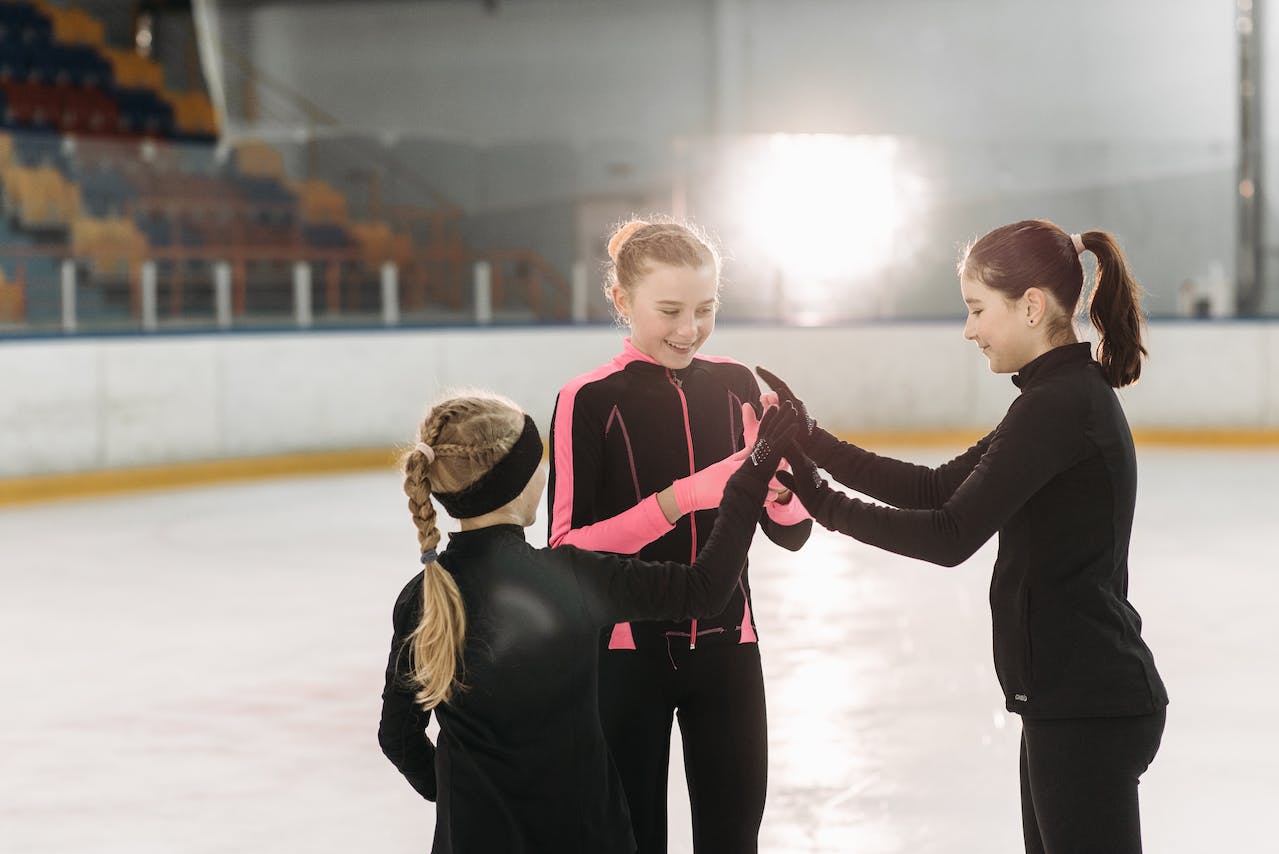What to wear when ice skating (Outfit do's and don'ts)
Dressing appropriately for ice skating not only keeps you comfortable and safe but also enhances your overall experience.
Ice skating is such a fun adventure, whether you're just starting out or already know your way around the rink. But here's a little secret: what you wear makes a big difference. It's not just about looking cool; it's about feeling comfy and staying safe while you skate.
Don't worry, it's not complicated. In this article, we're going to explore all the must-haves and things to avoid for your ice skating outfit. We will tell you why some clothes are superstars on the ice, while others might leave you feeling chilly or uncomfortable.

Source: Pexels
6 important things in your outfits
When it comes to ice skating, the details in your outfit can make a big difference. It's not just about throwing on a warm jacket. There are a few key things to keep in mind to ensure you're comfortable, safe, and ready to enjoy your time on the ice.
- Moisture-wicking fabrics: When you're ice skating, you're likely to work up a sweat. Wearing fabrics that wick away moisture (like polyester or nylon) can keep you feeling dry and comfortable. Avoid cotton, which tends to hold onto moisture, making you feel cold and clammy.
- Proper insulation: Keeping warm is essential, but too much bulk can restrict your movement. Opt for thin, insulating layers that provide warmth without the bulk. Materials like fleece or thin wool are great for this.
- Flexibility and fit: Remember, you're going to be moving a lot. Clothes that are too tight or too loose can hinder your movements or get caught on something. Choose outfits that fit well and allow for a full range of motion.
- Water resistance: While you're not planning on falling in, ice rinks can be wet places. Water-resistant outer layers can help keep you dry if you do have a tumble on the ice.
- Safety gear: Especially for beginners or those trying more advanced moves, protective gear like helmets, knee pads, and elbow pads can be vital. They may not be the most fashionable, but safety should always come first.
- Gloves or mittens: Not only do they keep your hands warm, but they also protect your hands from the ice in case of a fall.

Source: Pexels
Outfit do's: What to wear for ice skating
Now, let's glide into the heart of the matter: what to wear when you're ready to hit the ice. Nailing your ice skating outfit is about blending function with comfort, and here's how you can do just that.
1. Base layers
Think of your base layer as your personal climate control system. It sits right against your skin, so choosing the right material is crucial.
Go for moisture-wicking fabrics like polyester or merino wool. They'll pull sweat away from your skin, keeping you dry and warm. Avoid cotton - it absorbs moisture and will leave you feeling damp and chilly.
2. Mid Layers
Next up is the mid-layer, which keeps you warm. Fleece is great for this. It’s light and warm, so you won't feel like a bundled-up snowman. Depending on how cold it is, you might wear one or a few of these layers.
3. Outer Layers
The outer layer is like your personal shield against cold and wetness. Choose jackets and pants that stop water from getting in but still let air out. This way, you won't get sweaty or too hot. And remember, mobility is key, so avoid anything too bulky or stiff.
4. Footwear
The stars of the show are your ice skates. They should fit snugly but not be so tight that they cut off circulation. Ensure they offer good ankle support - a crucial factor in preventing injuries. If you're renting skates at the rink, take the time to find a pair that fits well.
5. Accessories
Gloves or mittens are a must – not only do they keep your hands warm, they also protect them in case of a fall.
For your head, a beanie or a snug headband can provide warmth without being too bulky. And don’t forget protective gear like knee pads or elbow pads, especially if you’re still learning or plan to try more daring moves.

Source: Pexels
Outfit don'ts: What to avoid when dressing for ice skating
While knowing what to wear is super important, it’s equally crucial to know what not to wear. Avoiding certain items can save you from discomfort or even potential mishaps on the ice. Let's break down the no-nos:
1. Avoid cotton clothes
Cotton might be cozy for lounging, but it’s not great for ice skating. Why? Cotton absorbs sweat and moisture, which makes you feel wet and cold quickly. It's better to stick with moisture-wicking fabrics that keep you dry and warm.
2. Skip jeans and other stiff fabrics
Jeans might seem like a tough, warm option, but they're a no-go for skating. Why? They don’t allow much movement and can become really uncomfortable if they get wet. Flexible, water-resistant pants are a much better choice.
3. Leave long scarves at home
Scarves are great for cold weather, but long scarves can be dangerous on the ice. They can get caught or tangled, leading to falls. Opt for a snug neck gaiter or a shorter scarf tucked into your jacket.
4. Avoid slippery, non-sporty footwear
If you're renting skates, don’t wear slippery socks or those without grip. Thin, fitted sports socks are best. They give you a good feel of the skate and prevent slipping inside the boot.
5. No dangly jewelry
It’s best to leave long necklaces, big earrings, and other dangly jewelry at home. These can catch on your clothing, get tangled, or distract you while you’re skating.

Source: Pexels
6 tips when doing ice skating
Ice skating can be a thrilling and enjoyable activity, but it also requires some know-how to ensure you have a safe and rewarding experience. Whether you’re a beginner or looking to polish your skills, here are some essential tips to keep in mind:
1. Start with the basics
If you’re new to ice skating, consider taking a beginner’s lesson. Learning the basic techniques such as how to fall safely, stop, and glide can significantly enhance your confidence and abilities on the ice.
2. Warm-up and stretch
Just like any physical activity, it’s important to warm up your muscles before you start skating. Spend a few minutes stretching to reduce the risk of injuries and improve your flexibility on the ice.
3. Maintain a proper posture
Keep your knees slightly bent and your weight forward. This stance gives you more stability and control. Avoid looking down as this can throw off your balance; instead, look in the direction you’re skating.
4. Learn to fall correctly
Falling is a part of learning to skate. When you feel yourself losing balance, try to fall sideways, keeping your fingers tucked in. This reduces the risk of getting injured or accidentally cut by the blades of other skaters.
5. Take breaks and stay hydrated
Don’t underestimate the physical exertion of ice skating. Take regular breaks to rest and hydrate, especially if you’re skating for extended periods or if it's your first time.
6. Use the barrier for support
If you’re a beginner, it’s okay to use the side barrier for support. Gradually, try to skate a little on your own, then return to the barrier as needed. This helps build your confidence and balance over time.
Conclusion
As we wrap up, remember that ice skating is a delightful blend of art, sport, and fun. It's an activity that can bring joy whether you're gliding solo or sharing the experience with friends and family. The key to enjoying your time on the ice is preparation, both in terms of skill and attire.
Dressing appropriately for ice skating not only keeps you comfortable and safe but also enhances your overall experience. By following the do's and don'ts we've outlined, you can ensure you’re well-equipped for the cold and the physical demands of skating.
Moreover, the tips provided for ice skating are designed to help you build confidence and skill, whether you’re a beginner or looking to improve your technique. Remember, ice skating is as much about balance and control as it is about grace and fun.
In conclusion, ice skating offers a unique combination of exhilaration and challenge, wrapped in the beauty of gliding on ice. With the right preparation in terms of both clothing and approach, you can make the most out of this delightful activity. So, lace up those skates, dress for the occasion, and glide into the world of ice skating with confidence and style!
Happy skating!
Friska 🐨
Read next: What to wear to the gym for men & women?
FAQs (Frequently Asked Questions)
1. What should I wear the first time I go ice skating?
For your first time, wear warm, flexible layers like a fitted thermal top, a fleece or sweater, and a water-resistant jacket. Choose leggings or athletic pants that allow movement. Don't forget gloves or mittens, thin socks, and a beanie or helmet for warmth and safety.
2. Is it better to wear thick or thin socks for ice skating?
Thin socks are generally better. Thick socks can make your skates too tight and reduce your feel of the ice, leading to blisters or discomfort. Choose thin, moisture-wicking socks for the best experience.
3. Is ice skating a good workout?
Absolutely! Ice skating is a great cardiovascular workout that improves joint flexibility, builds leg muscles, and enhances balance and coordination.
4. Is ice skating safe for kids?
Yes, with proper supervision and safety gear like helmets and knee pads. Start with teaching them basic skills like balancing and falling safely.
5. How can I improve my ice skating skills quickly?
Absolutely! Ice skating is a great cardiovascular workout that improves joint flexibility, builds leg muscles, and enhances balance and coordination.
6. What do I do if I fall while ice skating?
If you fall, try to fall to the side and keep your fingers tucked in to avoid injuries. To get up, roll to your hands and knees, place one foot between your hands, followed by the other, and push up to a standing position.
Source
